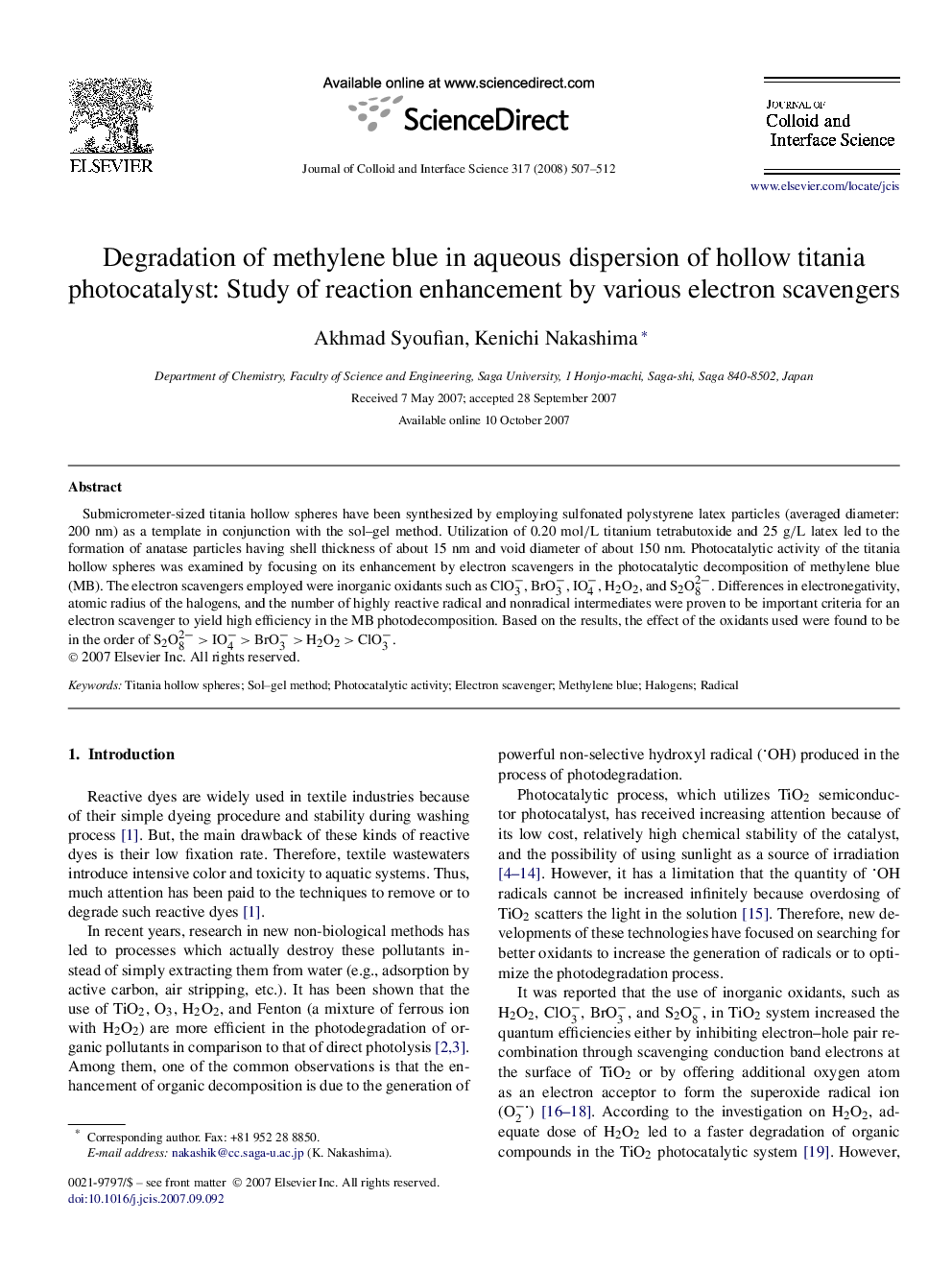| Article ID | Journal | Published Year | Pages | File Type |
|---|---|---|---|---|
| 611752 | Journal of Colloid and Interface Science | 2008 | 6 Pages |
Submicrometer-sized titania hollow spheres have been synthesized by employing sulfonated polystyrene latex particles (averaged diameter: 200 nm) as a template in conjunction with the sol–gel method. Utilization of 0.20 mol/L titanium tetrabutoxide and 25 g/L latex led to the formation of anatase particles having shell thickness of about 15 nm and void diameter of about 150 nm. Photocatalytic activity of the titania hollow spheres was examined by focusing on its enhancement by electron scavengers in the photocatalytic decomposition of methylene blue (MB). The electron scavengers employed were inorganic oxidants such as ClO−3, BrO−3, IO−4, H2O2, and S2O2−8. Differences in electronegativity, atomic radius of the halogens, and the number of highly reactive radical and nonradical intermediates were proven to be important criteria for an electron scavenger to yield high efficiency in the MB photodecomposition. Based on the results, the effect of the oxidants used were found to be in the order of S2O82−>IO4−>BrO3−>H2O2>ClO3−.
Graphical abstractSubmicrometer-sized titania hollow spheres have been synthesized by employing sulfonated polystyrene latex particles as a template in sol–gel method. Photocatalytic activity of the hollow spheres was investigated by focusing on its enhancement by utilizing various electron scavengers. The effect of all oxidants used in UV/TiO2 system on enhancing photodecomposition of MB was found to be in the order of S2O82−>IO4−>BrO3−>H2O2>ClO3−.Figure optionsDownload full-size imageDownload as PowerPoint slide
